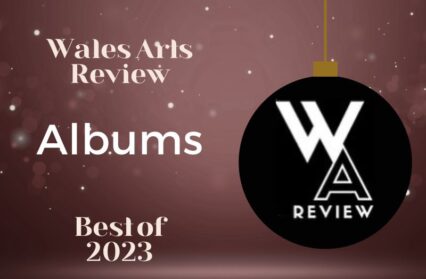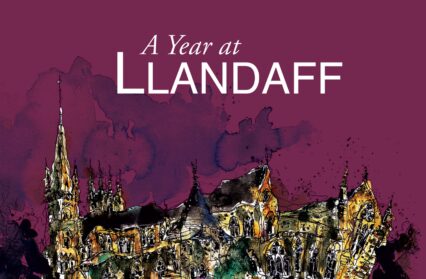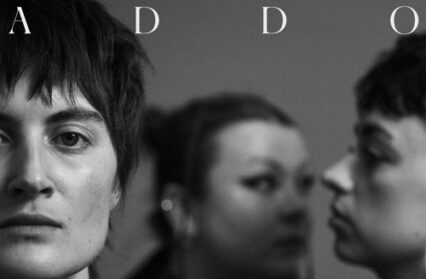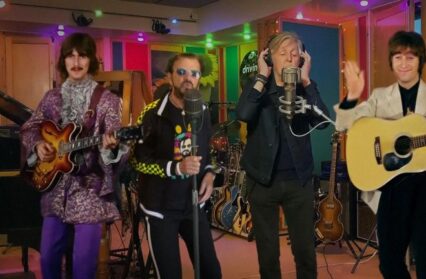Nigel Jarrett visits St David’s Hall to witness a St Valentine’s Day performance of pulsating rhythms, cyclical chords, and shifting harmonies, in Steve Reich’s Music for 18 Musicians by London Sinfonietta.
The inner workings of art seem to be an adjunct to the effects they produce. It’s a distinction that separates anatomy from aesthetics. Examination of the bones, of course, is always interesting and in some cases an occupation or a way of understanding; but unless the parts add up to a whole that’s proverbially greater than them, they remain merely mechanical. In music, there’s the additional problem for the composer of how to proceed, how to go on after having begun. There are various ways of doing it: through repetition, variation, transformation, elongation, consolidation, and so forth. That none of these issues need necessarily disturb one’s enjoyment of, say, a Brahms symphony, is an indication that the composer has somehow concealed the ways in which they contribute to it.
In music by Steve Reich, on the other hand, the workings appear to be as visible as the moving parts of a clock in a glass case, the cogs and wheels performing different functions at varying speeds but governed by the same unseen pulse. The point of it all inside a clock, though – and it has a point – is to tell the time. The ‘point’ of a Brahms symphony and a work by Reich is whatever the listener finds it to be: uplifting, breathtaking, civilising, ennobling, challenging or illustrative of an emotional state or empathy that’s beyond words to describe. One difference between Brahms and Reich lies in their approach to contour and shape: it’s an over-simplification, but Brahms goes up hill and down dale, whereas Reich follows a straight line. Both set out to enrich the journey. The other, crucial, difference, therefore, lies in the means and the quality of that enrichment.
‘Minimalism’ is the term used to describe Reich’s music and that of his compatriots, among them Philip Glass, John Adams and Terry Riley, and it denotes the deceptively simple materials they employ. That they are not that simple explained the presence of Micaela Haslam as performer and presenter at this concert. She’s the founder and music director of the vocal group Synergy, which joined the orchestra for Reich’s landmark Music For 18 Musicians. Before that, she appeared on the platform to ‘explain’ Reich’s music and methods – well, his methods. In front of an audience probably composed of Reich devotees, this seemed to be yet another example of the way in which contemporary music is offered to audiences from an embattled standpoint. If any music is in need of such preliminary explication, it’s Brahms’s. And why stop at his? With programme notes by Reich himself, further introduction seemed superfluous, though it made for a certain intimacy, with the knowledgeable in the audience hoping that the merely curious possibly sitting beside them might be added to their number. But elucidation is catching, hence this preamble; not that it’s meant to illuminate Reich more than how his music will stand the test of time (no pun intended).
Pulsating rhythms, repetition, canon, counterpoint, chords in cycles and displacing harmonies are the ingredients of Reich’s more complex work, though at its most rudimentary in Clapping Music for four hands, performed here by percussionists David Hockings and Timothy Palmer, it demonstrates a nakedness that one hopes will gather some substance to pitch it beyond novelty, however inspired. It’s music at two levels, as a restless, ever-moving interior works inside a repetitive rhythm, itself governed by a steady pulse. Four hands give a taster of what one can expect as numbers increase. They stayed the same for Nagoya Marimbas (Oliver Lowe and Joe Richards), written in 1994 but harking back to earlier work in which patterns are repeated on both instruments but are less melodically insistent. The earlier analogy of a clock’s working is interesting in this piece, as minimal dynamics indicate pattern changes which are ‘visually’ audible: what Reich termed ‘audible processes’. Not the least attribute of this performance, and the succeeding Mallet Quartet (Hockings and Owen Gunnell – vibraphones; Lowe and Richards – marimbas) was the clarity with which all these internal changes were signalled, combined with references to jazz (the vibraphone is one of jazz’s commandeered instruments) to the extent of marimbas and vibes enjoying a division of labour as, respectively, powerhouse and elevated soloists; elevated in pitch, at any rate.
All this was in the first half of the concert and represented Reich in relative miniature: all three pieces together took up just twenty-five minutes. That’s what some see as the problem with Minimalism. When composers are pursuing a straight, steady line, even while performing some spectacular sleight-of-hand along the way, what motivates them to stop?
It’s a question raised by Music For 18 Musicians, which lasts about 55 minutes (58 on my watch; one can become obsessed with timepieces at a concert like this). Synergy’s four singers (Haslam, Heather Cairncross, Amy Haworth, and Amanda Morrison) were placed two each left and right of the mesh of instruments, which comprise pianos, a cello, a violin, two clarinets doubling bass clarinet, vibraphone, marimbas, xylophones, and metallophone (a vibraphone without its sustaining motor), and at one point a set of maracas. The Reichian idea of ‘seeing’ what one’s hearing is enhanced in this piece by the movement of some of the fourteen from one instrument to another. Haslam, in another introduction, included the sound engineer in the band. In a hall with some of the best acoustical properties in Europe, the sight of an engineer always seems perverse, but the microphones held by each of the singers and used manually to fade the voices, coupled with other electronics, meant that the sounds had to be balanced with the purely acoustical (non-electronic) instruments. As other engineers fighting against a purpose-built audial space have discovered at St David’s Hall, it’s not easy, and this reviewer for one could have done with a more distinct vocalese, or sometimes any at all. Clapping Music happily reverberated in the hall’s fastnesses. That Music For 18 Musicians is important in history cannot be gainsaid; that it is also an example of how far Minimalist ambition can go without seeming over-burdened or pointlessly variable for variety’s sake is equally true. Where the operas and some other works of Glass, and to a lesser extent Adams, wobble beneath their emotional freight, Reich brings lightness of touch, wit, and transparency. But the enemies of Minimalism are banality and monotony, and they’re always in wait there or thereabouts.
This was as brightly insistent a performance of Music For 18 Musicians as could have been wished for. Barely noticeable, unless one were making comparative assessments or witnessing how a couple of the players were indicating looming signposts, were the number of repeated fades in and out of the work’s different ingredients. Some producers – Reich’s music is very much a recorded phenomenon and once, but no longer, seemed the sole preserve of his own ensemble – opt for a barely differentiated tapestry of sound, others for one in which the developments attract special attention. The Sinfonietta’s view on this short tour of the UK’s big concert venues clearly falls somewhere between the two. One might not go so far as to say that it’s a work of contrapuntal luminosity without qualification, but as a sonic experience it’s astonishing. If one credited Minimalism with no more than being an example of how music, almost without warning, can steam off in a new direction when options seemed spent or limited, it would merit attention. At the same time, some critics see in its repetitiveness a wilful disregard for music’s ability to be all-embracing and a reminder of how tortuous insistence is the method of both the advertiser and the tyrant. One takes one’s pick.
Nigel Jarrett is a winner of the Rhys Davies prize for short fiction and the Templar Shorts award. He’s had two collections of short stories, a novel, and a collection of poetry published. A former daily newspaper journalist, he now reviews and writes for Wales Arts Review, Acumen poetry magazine, Jazz Journal, Slightly Foxed and many others. He lives in Monmouthshire and swims whenever he gets the chance.


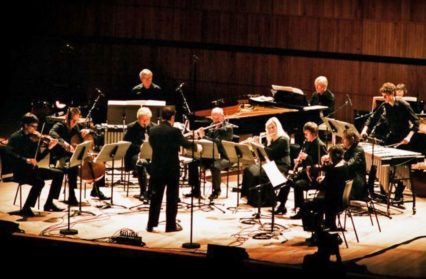
 Enjoyed this article? Support our writers directly by buying them a coffee and clicking this link.
Enjoyed this article? Support our writers directly by buying them a coffee and clicking this link.


